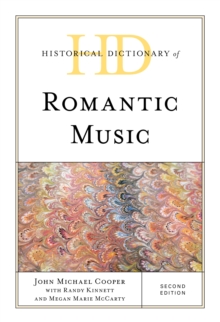
Historical Dictionary of Opera Hardback
by Scott L. Balthazar
Part of the Historical Dictionaries of Literature and the Arts series
Hardback
Description
Opera has been around ever since the late 16th century, and it is still going strong in the sense that operas are performed around the world at present, and known by infinitely more persons than just those who attend performances.
On the other hand, it has enjoyed periods in the past when more operas were produced to greater acclaim.
Those periods inevitably have pride of place in this Historical Dictionary of Opera, as do exceptional singers, and others who combine to fashion the opera, whether or not they appear on stage.
But this volume looks even further afield, considering the cities which were and still are opera centers, literary works which were turned into librettos, and types of pieces and genres.
While some of the former can be found on the web or in other sources, most of the latter cannot and it is impossible to have the whole picture without them. Indeed, this book has an amazingly broad scope. The dictionary section, with about 340 entries, covers the topics mentioned above but obviously focuses most on composers, not just the likes of Mozart, Verdi and Wagner, but others who are scarcely remembered but made notable contributions.
Of course, there are the divas, but others singers as well, and some of the most familiar operas, Don Giovanni, Tosca and more.
Technical terms also abound, and reference to different genres, from antimasque to zarzuela.
Since opera has been around so long, the chronology is rather lengthy, since it has a lot of ground to cover, and the introduction sets the scene for the rest.
This book should not be an end but rather a beginning, so it has a substantial bibliography for readers seeking more specific or specialized works.
It is an excellent access point for readers interested in opera.
Information
-
Available to Order - This title is available to order, with delivery expected within 2 weeks
- Format:Hardback
- Pages:562 pages
- Publisher:Scarecrow Press
- Publication Date:05/07/2013
- Category:
- ISBN:9780810867680
Information
-
Available to Order - This title is available to order, with delivery expected within 2 weeks
- Format:Hardback
- Pages:562 pages
- Publisher:Scarecrow Press
- Publication Date:05/07/2013
- Category:
- ISBN:9780810867680










